Comparative Study of the Geodesic Structure of Time-Conformal Quantum-Corrected AdS–Schwarzschild Black Hole
Abstract
1. Introduction
2. Noether Symmetries of Quantum-Corrected AdS–Schwarzschild Solution and Conservation Laws
3. Time-Conformal Quantum-Corrected AdS–Schwarzschild Solution and the Corresponding Conservation Laws
4. Thermodynamics of the Black Hole
5. Einstein’s Field Equations
6. Dynamics of Neutral Particles
7. Dynamics of Charged Particles
Collision of Charged Particles
8. Orbit Stability
9. Results and Discussions
9.1. Effective Potential
9.2. Effective Force
9.3. Escape Velocity
9.4. Orbit Stability
10. Conclusions
- The increasing values of the quantum-corrected term a decrease the effective potential.
- The effective potential displays a dual response to the time-conformal parameter . For small ranges, they behave alike. Over large distances, they are inversely proportional to each other.
- The parameters of the cosmological constant and the angular momentum are directly related to the effective potential of the field produced by the given BH.
- In small radial coordinates, the increasing effects of the magnetic field strength are directly related to the effective potential, but for large ranges they are inversely proportional.
- Effective force is directly proportional to the time-conformal parameter , which is inversely related to the quantum-corrected parameter a and the magnetic effects.
- For higher values of quantum-corrected parameter a and time-conformal parameter , the particle can escape more quickly from the orbits of the time-conformal QC-AdS-SBH.
- The angular momentum and the escape velocity are inversely related.
- The magnetic field strength increases the escape velocity of the test particle.
- The orbits of the time-conformal QC-AdS-SBH exhibit stable behavior for higher values of the time-conformal parameter .
- The orbits of the black hole show more stability for higher influences of the quantum-corrected term a.
Author Contributions
Funding
Data Availability Statement
Acknowledgments
Conflicts of Interest
References
- Reissner, H. Uber die Eigengravitation des elektrischen Feldes nach der Einsteinschen Theorie. Ann. Phys. 1916, 355, 106–120. [Google Scholar] [CrossRef]
- Nordström, G.; Ned, K. On the energy of the gravitation field in Einstein’s theory. Akad. Wet. Proc. Ser. B Phys. Sci. 1918, 20, 1238. [Google Scholar]
- Perlmutter, S. Supernovae, dark energy, and the accelerating universe. Phys. Today 2003, 56, 53–62. [Google Scholar] [CrossRef]
- Pugliese, D.; Quevedo, H.; Ruffini, R. Motion of charged test particles in Reissner–Nordström spacetime. Phys. Rev. D 2011, 83, 104052. [Google Scholar] [CrossRef]
- Rayimbaev, J.; Figueroa, M.; Stuchlík, Z.C.V.; Juraev, B. Test particle orbits around regular black holes in general relativity combined with nonlinear electrodynamics. Phys. Rev. D 2020, 101, 104045. [Google Scholar] [CrossRef]
- Sharp, N.A. Geodesics in black hole space-times. Gen. Relativ. Gravit. 1979, 10, 659. [Google Scholar] [CrossRef]
- Turimov, B.; Rayimbaev, J.; Abdujabbarov, A.; Ahmedov, B.; Stuchlík, Z.C.V. Test particle motion around a black hole in Einstein-Maxwell-scalar theory. Phys. Rev. D 2020, 102, 064052. [Google Scholar] [CrossRef]
- Dalui, S.; Majhi, B.R.; Mishra, P. Presence of horizon makes particle motion chaotic. Phys. Lett. B 2019, 788, 486–493. [Google Scholar] [CrossRef]
- Steiner, J.F.; McClintock, J.E.; Remillard, R.A.; Gou, L.; Yamada, S.; Narayan, R. The constant inner-disk radius of LMC X-3: A basis for measuring black hole spin. Astrophys. J. Lett. 2010, 718. [Google Scholar] [CrossRef]
- de Moura, A.P.S.; Letelier, P.S. Chaos and fractals in geodesic motions around a nonrotating black hole with halos. Phys. Rev. E 2000, 61, 6506. [Google Scholar] [CrossRef]
- Stuchlík, Z.; Kološ, M.; Slaný, P.; Tursunov, A. Influence of cosmic repulsion and magnetic fields on accretion disks rotating around Kerr black holes. Universe 2020, 6, 26. [Google Scholar] [CrossRef]
- Kazakov, D.; Solodukhin, S. On quantum deformation of the Schwarzschild solution. Nucl. Phys. B 1994, 429, 153–176. [Google Scholar] [CrossRef]
- Malakolkalami, B.; Ghaderi, K. Schwarzschild-anti de Sitter black hole with quintessence. Astrophys. Space Sci. 2015, 357, 112. [Google Scholar] [CrossRef]
- Eslamzadeh, S.; Nozari, K. Tunneling of massless and massive particles from a quantum deformed Schwarzschild black hole surrounded by quintessence. Nucl. Phys 2020, 959, 115136. [Google Scholar] [CrossRef]
- Ali, M.; Ali, F.; Saboor, A.; Ghafar, M.S.; Khan, A.S. The Second-Order Correction to the Energy and Momentum in Plane Symmetric Gravitational Waves Like Spacetimes. Symmetry 2019, 11, 220. [Google Scholar] [CrossRef]
- Khan, M.A.; Ali, F.; Fatima, N.; El-Moneam, M.A. Particles Dynamics in Schwarzschild like Black Hole with Time Contracting Horizon. Axioms 2023, 12, 34. [Google Scholar] [CrossRef]
- Regimbau, T. The Quest for the Astrophysical Gravitational-Wave Background with Terrestrial Detectors. Symmetry 2022, 14, 270. [Google Scholar] [CrossRef]
- Jawad, A.; Ali, F.; Shahzad, M.U.; Abbas, G. Dynamics of particles around time conformal Schwarzschild black hole. Eur. Phys. J. C 2016, 76, 586. [Google Scholar] [CrossRef]
- Zahrani, A.; Frolov, V.; Shoom, A. Critical escape velocity for a charged particle moving around a weakly magnetized Schwarzschild black hole. Phys. Rev. D. 2013, 87, 084043. [Google Scholar] [CrossRef]
- Nakamura, Y.; Ishizuka, T. Astrophys. Motion of a charged particle around a black hole permeated by magnetic field and its chaotic characters. Space Sci. 1993, 210, 105. [Google Scholar] [CrossRef]
- Takahashi, M.; Koyama, H. Chaotic motion of charged particles in an electromagnetic field surrounding a rotating black hole. Astrophys. J. 2009, 693, 472. [Google Scholar] [CrossRef]
- Kopacek, O.; Kovar, J.; Karas, V.; Stuchik, Z. Recurrence plots and chaotic motion around Kerr black hole. AIP Conf. Proc. 2010, 1283, 278. [Google Scholar]
- Kopacek, O.; Karas, V.; Kovar, J.; Stuchik, Z. Transition from regular to chaotic circulation in magnetized coronae near compact objects. Astrophys. J. 2010, 722, 1240. [Google Scholar] [CrossRef]
- Dhariwal, M.; Nahid, F. Homotopy Perturbation Method for Solving Mathematical Model of Novel Coronavirus Differential Equations. SSRN 2020, 1, 3627481. [Google Scholar] [CrossRef]
- Noether, E. Nachr kgl ges wiss göttingen. Math. Phys. Kl II 1918, 235, 237. [Google Scholar]
- Bekenstein, J. Black holes and entropy. Phys. Rev. D. 1973, 7, 2333. [Google Scholar] [CrossRef]
- Bardeen, J.; Carter, B.; Hawking, S. Communications in mathematical physics. Commun. Math. Phys. 1973, 31, 161–170. [Google Scholar] [CrossRef]
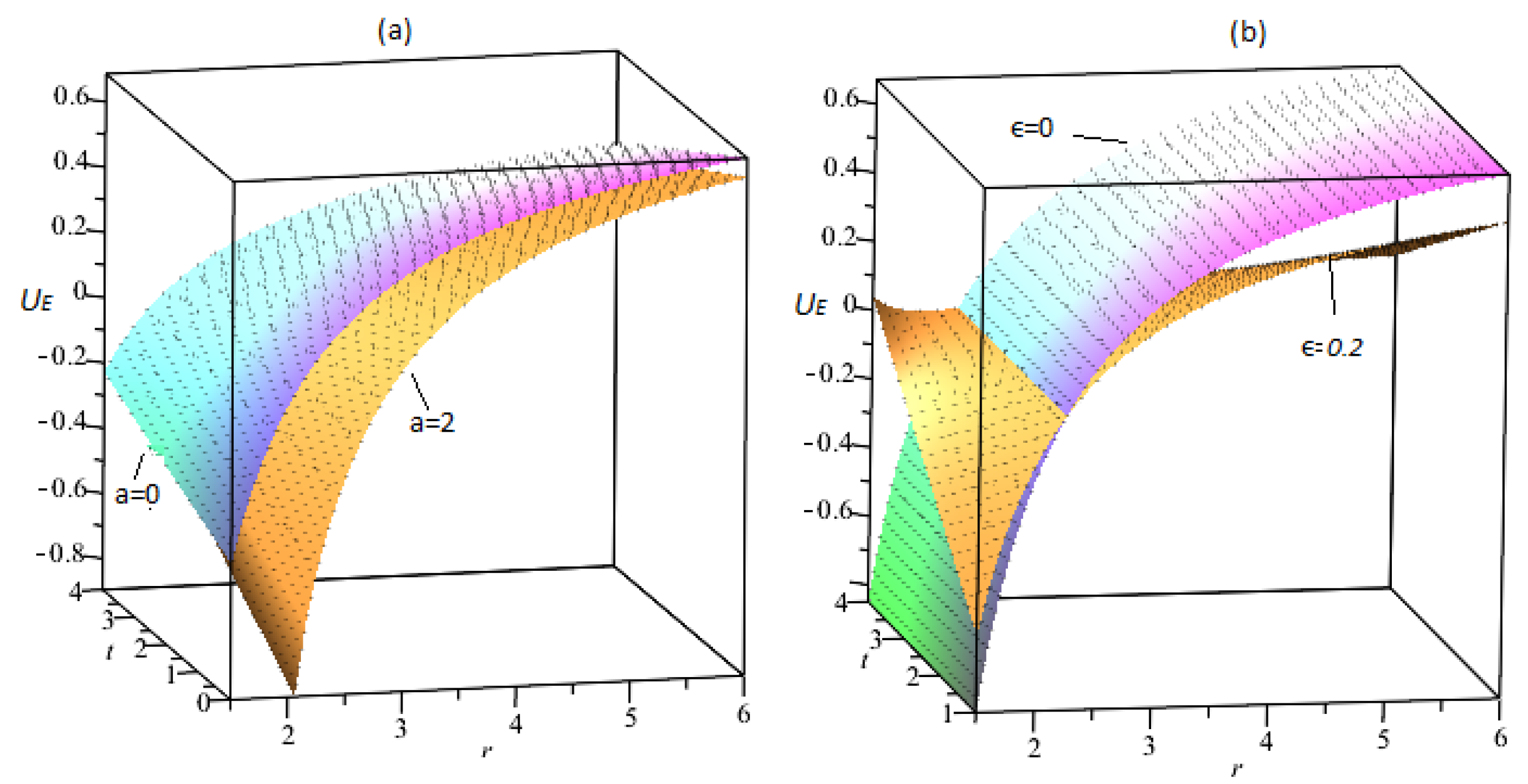
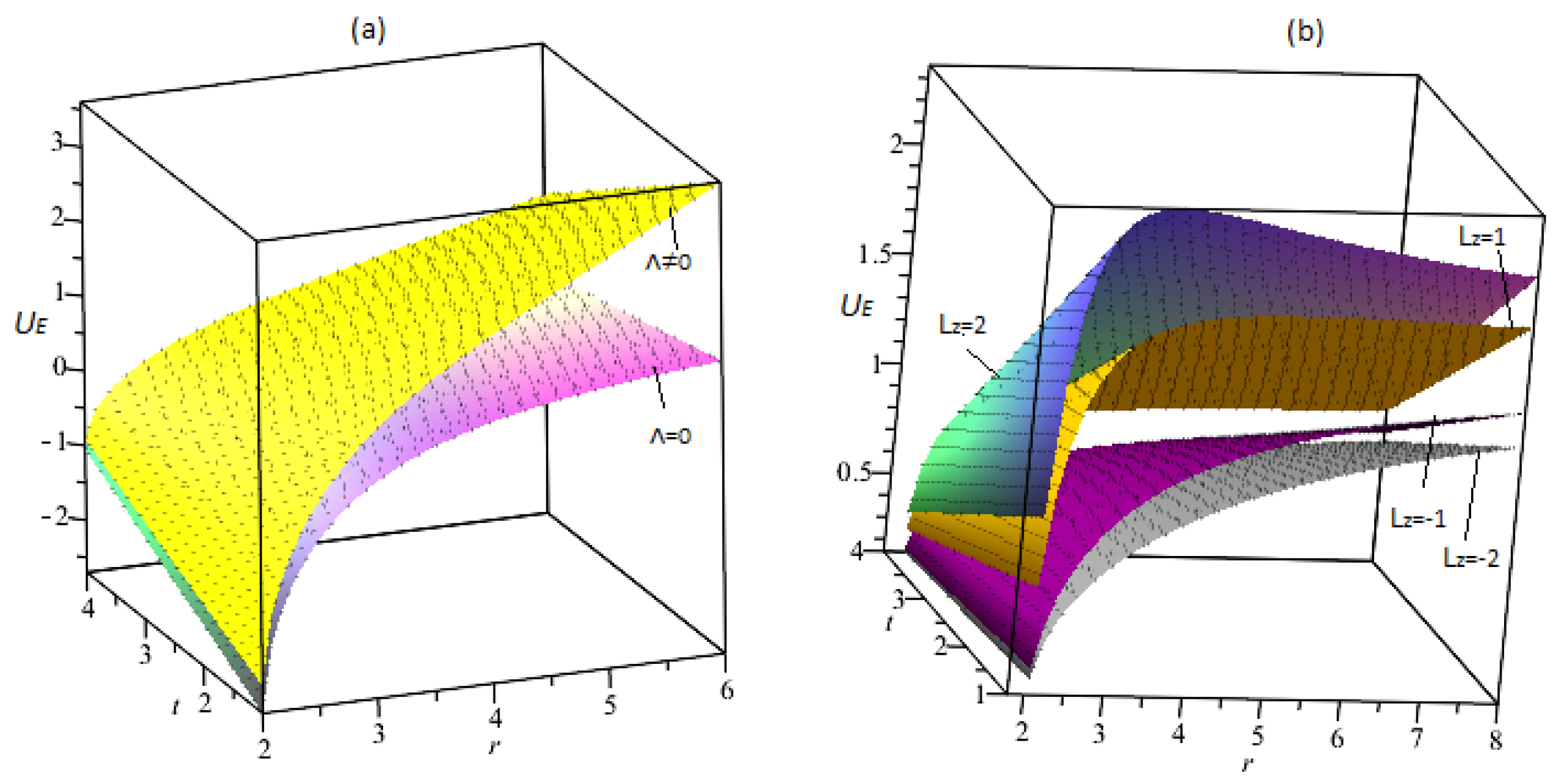
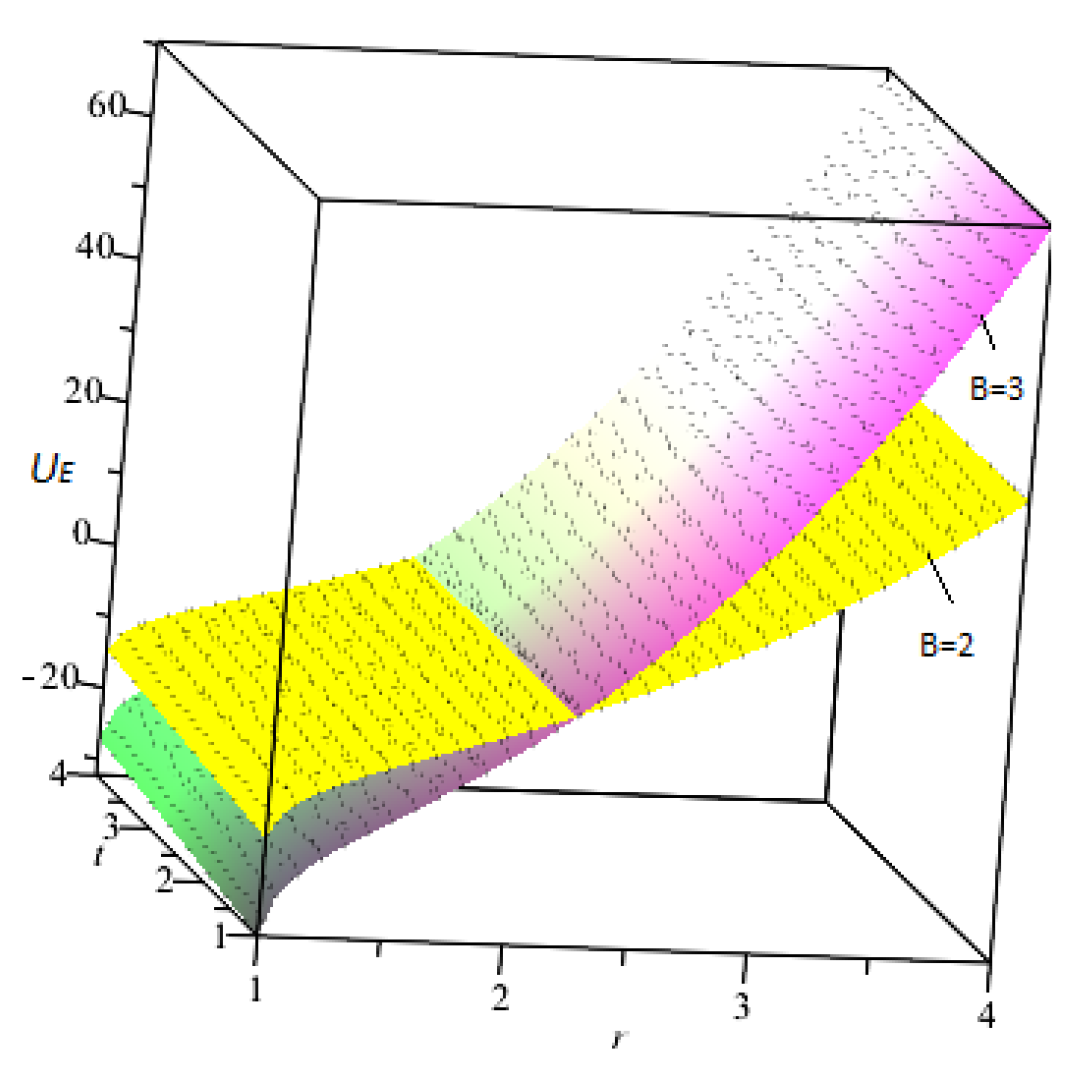
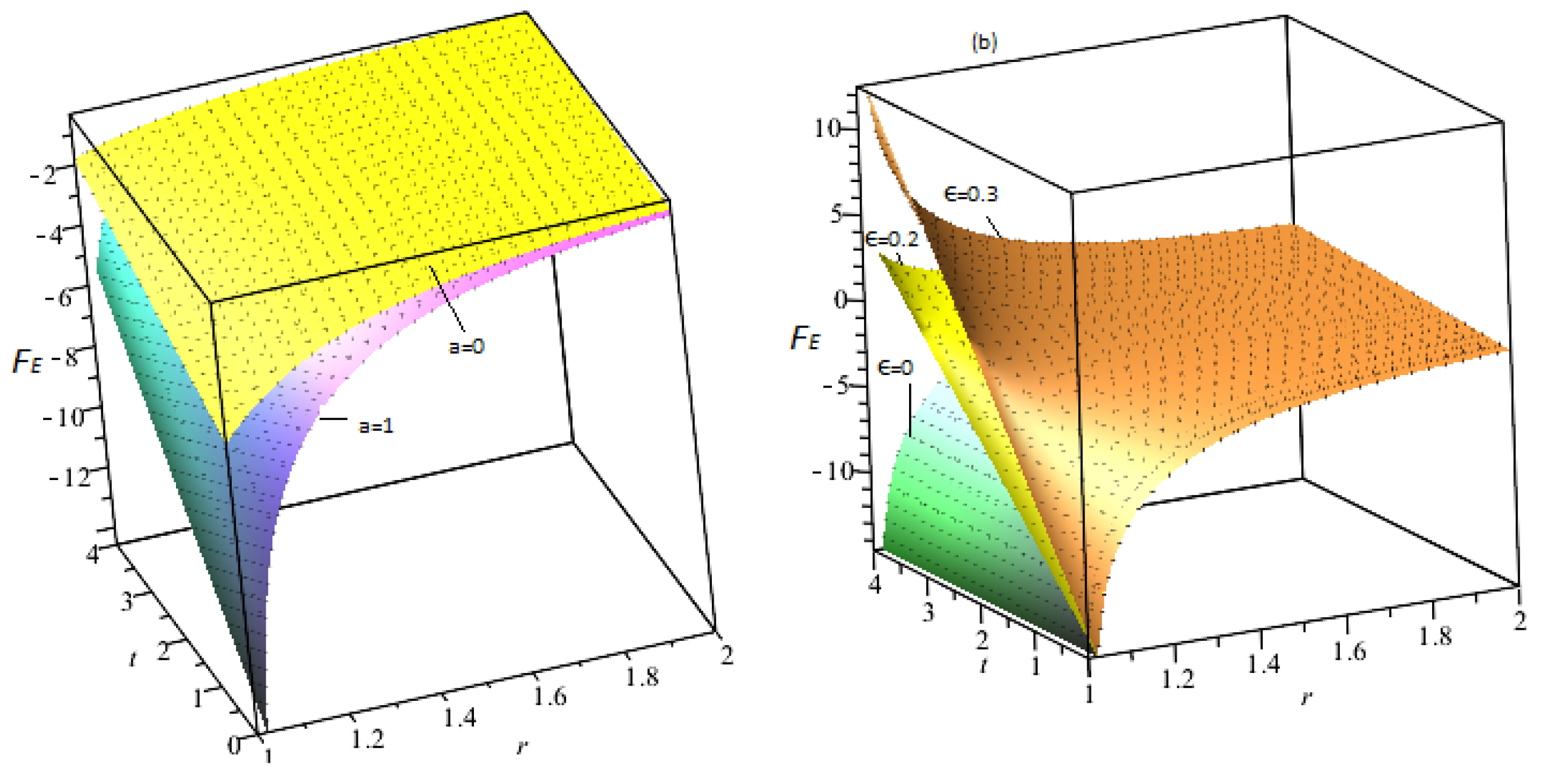
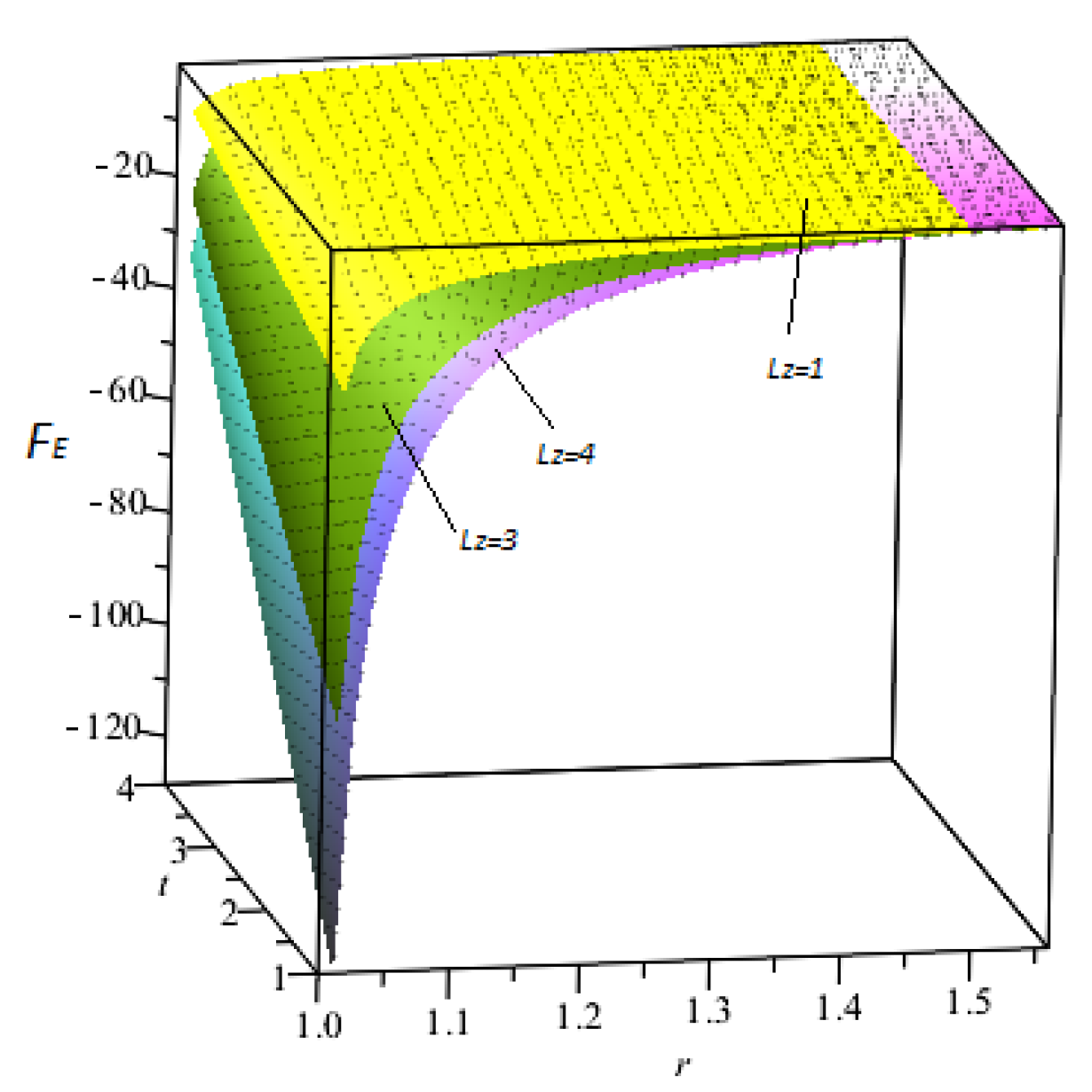
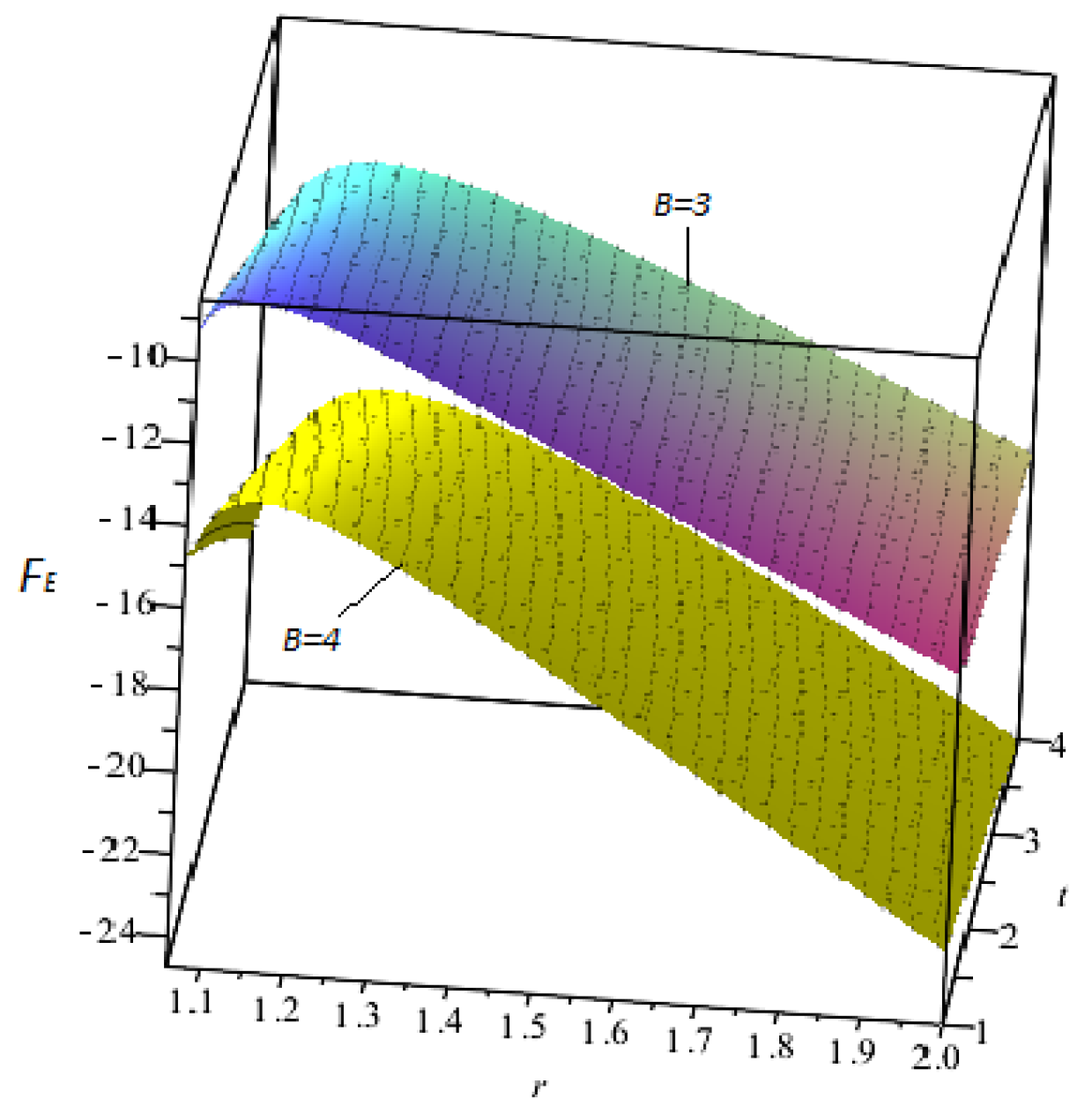
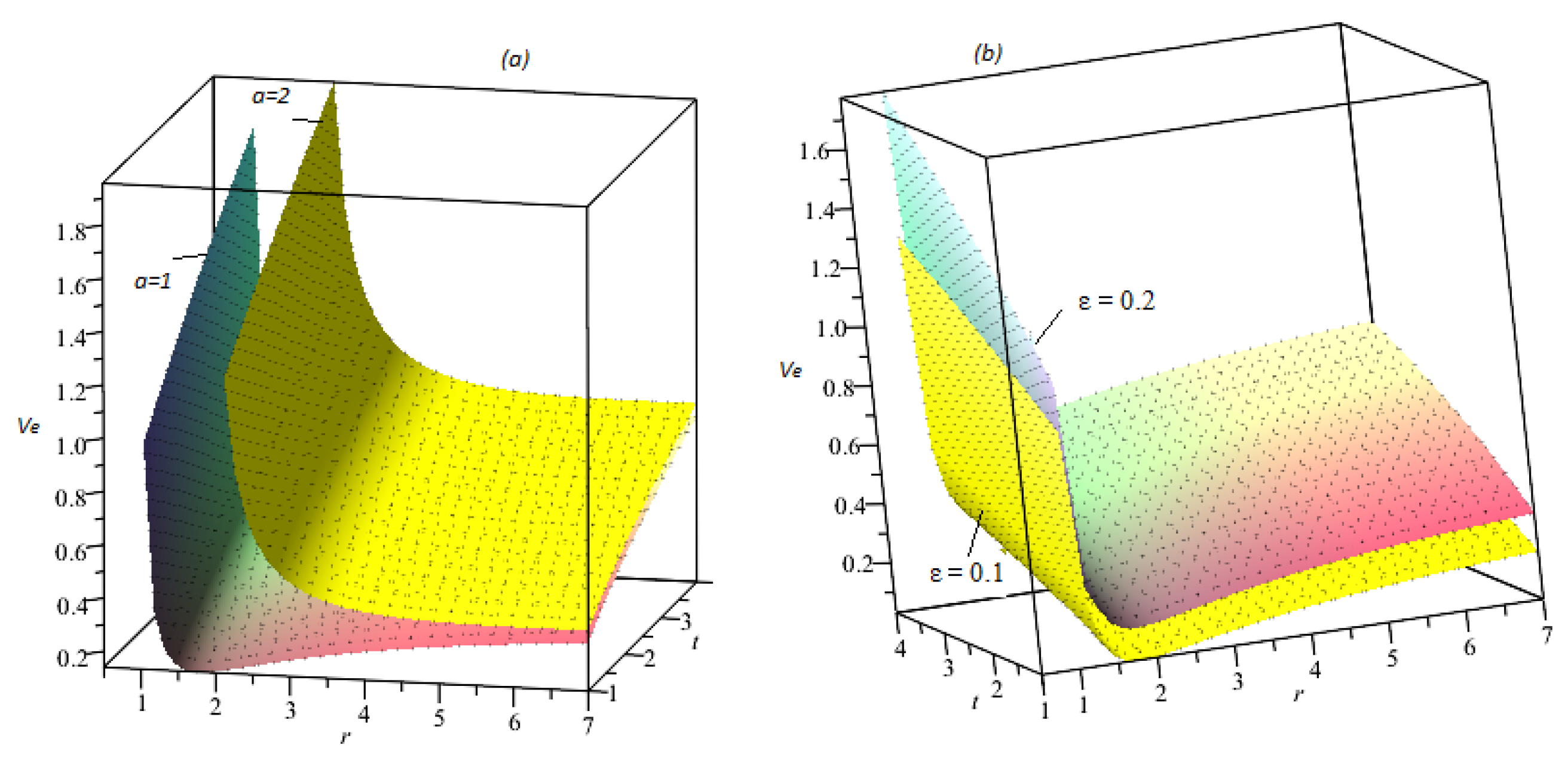

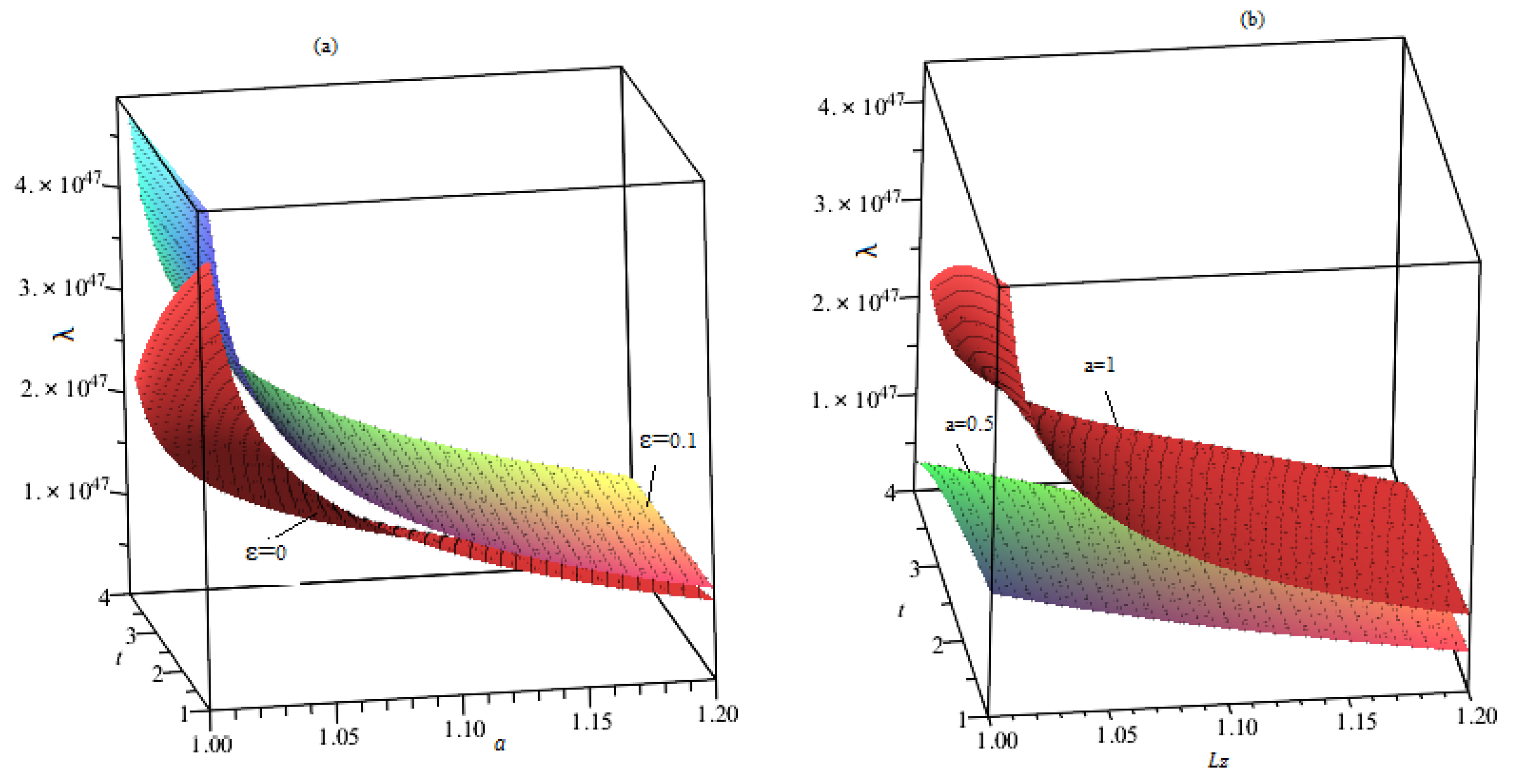
| Gen | First Integrals |
|---|---|
| Gen | First Integrals |
|---|---|
Disclaimer/Publisher’s Note: The statements, opinions and data contained in all publications are solely those of the individual author(s) and contributor(s) and not of MDPI and/or the editor(s). MDPI and/or the editor(s) disclaim responsibility for any injury to people or property resulting from any ideas, methods, instructions or products referred to in the content. |
© 2023 by the authors. Licensee MDPI, Basel, Switzerland. This article is an open access article distributed under the terms and conditions of the Creative Commons Attribution (CC BY) license (https://creativecommons.org/licenses/by/4.0/).
Share and Cite
Khan, M.A.; Ali, F.; Fatima, N. Comparative Study of the Geodesic Structure of Time-Conformal Quantum-Corrected AdS–Schwarzschild Black Hole. Symmetry 2023, 15, 459. https://doi.org/10.3390/sym15020459
Khan MA, Ali F, Fatima N. Comparative Study of the Geodesic Structure of Time-Conformal Quantum-Corrected AdS–Schwarzschild Black Hole. Symmetry. 2023; 15(2):459. https://doi.org/10.3390/sym15020459
Chicago/Turabian StyleKhan, Muhammad Atif, Farhad Ali, and Nahid Fatima. 2023. "Comparative Study of the Geodesic Structure of Time-Conformal Quantum-Corrected AdS–Schwarzschild Black Hole" Symmetry 15, no. 2: 459. https://doi.org/10.3390/sym15020459
APA StyleKhan, M. A., Ali, F., & Fatima, N. (2023). Comparative Study of the Geodesic Structure of Time-Conformal Quantum-Corrected AdS–Schwarzschild Black Hole. Symmetry, 15(2), 459. https://doi.org/10.3390/sym15020459






